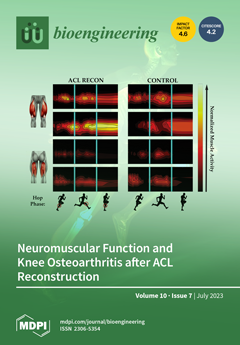Although trans-vaginal mesh (TVM) offers a successful anatomical reconstruction and can subjectively relieve symptoms/signs in pelvic organ prolapse (POP) patients, its objective benefits to the voiding function of the bladder have not been well established. In this study, we investigated the therapeutic advantage
[...] Read more.
Although trans-vaginal mesh (TVM) offers a successful anatomical reconstruction and can subjectively relieve symptoms/signs in pelvic organ prolapse (POP) patients, its objective benefits to the voiding function of the bladder have not been well established. In this study, we investigated the therapeutic advantage of TVM on bladder function by focusing on the thermodynamic workload of voiding. The histories of 31 POP patients who underwent TVM repair were retrospectively reviewed. Cystometry and pressure volume analysis (PVA) of the patients performed before and after the operation were analyzed. TVM postoperatively decreased the mean voiding resistance (mRv,
p < 0.05, N = 31), reduced the mean and peak voiding pressure (mPv,
p < 0.05 and pPv,
p < 0.01, both N = 31), and elevated the mean flow rate (mFv,
p < 0.05, N = 31) of voiding. While displaying an insignificant effect on the voided volume (Vv,
p < 0.05, N = 31), TVM significantly shortened the voiding time (Tv,
p < 0.05, N = 31). TVM postoperatively decreased the loop-enclosed area (Apv,
p < 0.05, N = 31) in the PVA, indicating that TVM lessened the workload of voiding. Moreover, in 21 patients who displayed postvoiding urine retention before the operation, TVM decreased the residual volume (Vr,
p < 0.01, N = 21). Collectively, our results reveal that TVM postoperatively lessened the workload of bladder voiding by diminishing voiding resistance, which reduced the pressure gradient required for driving urine flow.
Full article






